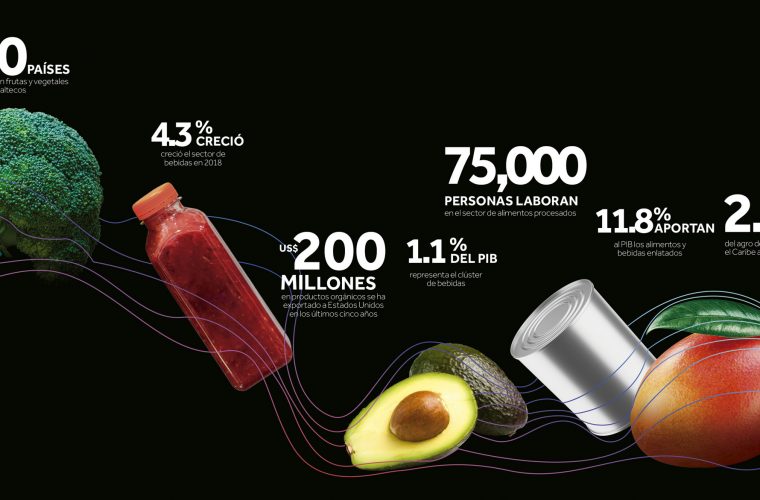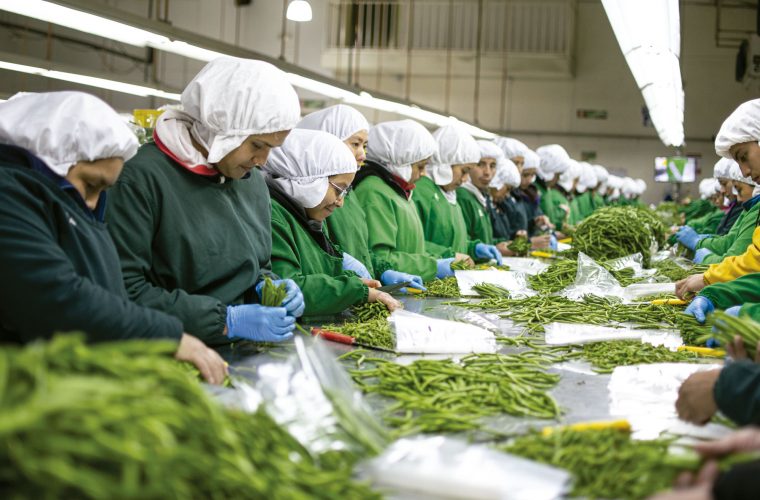A nation with dynamic operations
Guatemala’s favorable geographical location fosters a positive business environment and promotes the concentration of the regional economic development on this economy, the largest in Central America.
Guatemala has a concentration of 35% of the total population of the isthmus and offers competitive advantages for trade and business development. The productive sectors in development reflect that local consumption and foreign trade have turned the country into a dynamic economy. The total foreign trade of Guatemala registered 32 million 1 thousand metric tons (Mt) in 2017; 905 thousand more than it did in 2016. In terms of transported tonnage, there was a growth of 2.2%, which is a reflection of a positive foreign rate trade in 2017, compared with 0.8% from 2016. In 2017, the movement of cargo through the country’s seaports increased by 1 thousand 535 metric tons (MT), reaching a total of 27 thousand 960 MT.
Exports which went through Santo Tomás de Castilla, Puerto Barrios and Boyas San Jose reflect a recovery. This is an indicator of sustained growth maintained by national seaports.
According to data from the Bank of Guatemala (Banguat), the country’s exports reached
US$ 11 billion, a 5.3% more than in 2016. The increase in sales abroad is associated with the improvement in clothing, cardamom, banana, coffee, manufacturing and petroleum products.
Annual figures from 2017
Handling of foreign trade goods, according to port type
79% Maritime ports
20.8% Terrestrial ports
0.2% Air ports
United States is the main commercial partner of Guatemala, with a 35%
share of total.
Imports grew 8.2% in 2017 and reached US$ 18 billion 389 million, which is US$ 1 billion 386 million more than in 2016.
The country has a national logistics plan that frames the needs and priorities of the logistic system in Guatemala. It is an instrument that facilitates the trading conditions, processes and competitiveness of the country.
The logistics prioritize four subsystems: agricultural industry, light manufacturing and textiles, tourism and regional trade. In addition, there is also a commitment from the public and private sectors that executes the plan.
Guatemala has a National Competitiveness Agenda of 2016-2032, a country policy that pursues local development with the primary objective to improve the quality of life of the inhabitants and to achieve a sustainable and inclusive economic growth.
The programmed actions and roadmap will enable the productive sectors, with a single vision of the country, create more jobs and to achieve a sustained growth of the GDP up to 6% in a year.
The policy has prioritized 11 clusters, which will provide 82% more jobs, and therefore, the mobilization of more goods in the country, including light manufacturing, processed foods, fruits and vegetables, construction, textiles, clothing and footwear, and call centers.
Guatemalan imports
Growth of +8.2%
US$18,389 millions
Imports of consumer goods
Participation of 32% in the total national imports
US$5,919.4 millions
11 prioritized clusters
Jobs +82%
- Light manufacturing
- Processed foods
- Fruits and vegetables
- Construction
- Textile, manufacturing and footwear
- ICT’s, call centers and software
- Forest products
- Furniture
- Metalworking
- Transportation and logistics
- Beverages
- Tourism and health services
Source: National Policy for Competitiveness & Banguat












